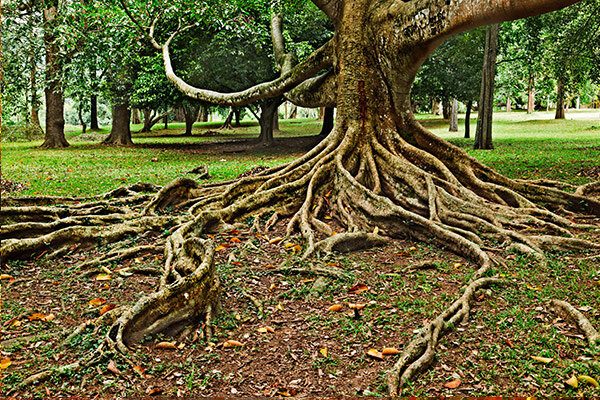The Ins and Outs of Kalamazoo Tree Healthcare
As any arborist worth their salt will tell you, proper tree healthcare means more than just a dash of water and a sprinkle of sunshine. Depending on the type of trees you have in your yard, the quality of health you want to attain for them, and the resources you have on-hand, the type of care you give to your trees could vary greatly. To help clarify what sort of healthcare you should provide for your trees, today’s blog post will provide information on steps you can take to make sure your trees are getting the care they need to prevent unnecessary tree trimming and—at worst—tree removal.
The Impact of Mulch on Your Trees
Trees are such large plants that, at times, it may feel like they would develop just as well with or without our interference. In truth, though, even seemingly small changes we make to the tree’s environment can make a world of difference. One such change you can make is using mulch to promote your tree’s health. While mulch has the obvious benefit of giving your tree an extra helping of nutrients, proper mulching also insulates the tree and its roots from the toll of excessively hot or cold weather. Or, if temperatures are relatively neutral in your area, then mulch acts as an additional line of defense between your tree and any sly weeds that may seek to sap your tree’s nutrients. Additionally, quality mulch can generally be purchased for less than $5, making it an ideal healthcare option for your trees.
Tree Trimming and Pruning: What to Look for
Sometimes, trimming or pruning is necessary to maintaining your tree’s health. Before you take action, however, it’s critical to make sure that the tree branches your pruning truly need to be pruned. One of the first signs to look for in a dead branch or tree limb is to see if there are buds on the twigs of the limb in question. If the buds are shiny, smooth, and structurally sound, then that means they’re still receiving nutrients and the tree branch is still alive. If the buds are dried up, discolored, and shriveled, then it’s likely that the tree branch in question is already dead and needs to be removed. If the tree has no buds to judge by, then you ought to try gently bending the tree twig or branch. Since trees need to withstand the power of storms and inclement weather to survive, a living tree and tree branch will make sure to divert the resources necessary to make its limbs bend and not break. If you feel like you can’t gently bend the tree branch without breaking it, then that means the tree limb is no longer receiving the nutrients necessary to survive and it ought to be removed.
If you’ve noticed that a tree limb is dead or dying and must be removed, then feel free to contact us here at American Arbor for all tree service in Kalamazoo, Portage, or the surrounding areas.


